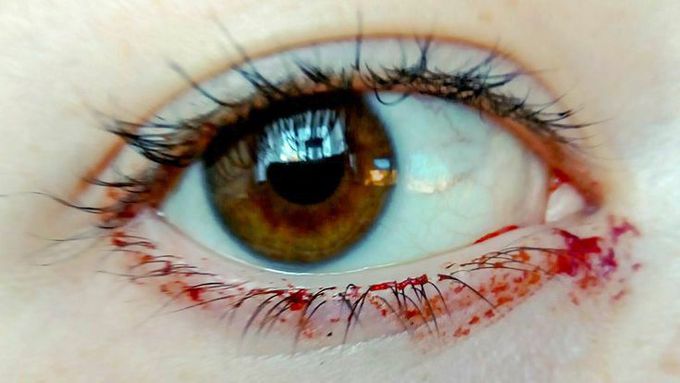


HAEMOLACRIA
Crying bloody tears may seem like a fictional occurrence, but tears tinged with blood are an actual medical condition. Referred to as haemolacria, crying bloody tears is a rare condition that causes a person to produce tears tinged with, or partially made of, blood. In many cases, haemolacria is a symptom of another condition and is usually benign. However, if you begin to experience any instance of blood mixed with your tears, recurrent cases, or accompanying symptoms, seek immediate medical attention. What causes bloody tears? Cases of haemolacria have been attributed to a number of causes and conditions. Some of the more common include: hormone changes menstruation inflammation conjunctival injuries trauma blocked tear duct high blood pressure blood disorders, such as hemophilia nosebleeds pyogenic granuloma melanoma tumors In some cases of haemolacria, there are no identifiable medical causes or explanation. As a result, it may be deemed a spontaneous symptom that usually resolves in time. Haemolacria is usually fleeting, ending as quickly as it started. But if you begin to experience additional symptoms with bloody tears, schedule an app Treatment for haemolacria Prior to recommending treatment, your doctor will have to fully diagnose the underlying condition. To properly diagnose haemolacria, doctors may: probe and irrigate the affected area of your eye take cultures to identify any abnormalities perform a nasal endoscopy perform a CT scan of your sinuses Effective treatment ultimately depends on the underlying cause. Often, bloody tears require no treatment. Your doctor might suggest a wait-and-see approach, but in more serious cases, your doctor may recommend: medication or antibiotic eye drops to fight off infection dilation and flushing for tear draining stenting surgery or reconstruction Before deciding on a treatment plan, discuss options with your doctor. Surgery and other invasive procedures may only be required in more serious cases. Outlook Haemolacria, though initially shocking, is often harmless and resolves quickly on its own. It’s also been seen as a symptom for other conditions or diseases. If you begin to experience additional symptoms, discomfort, or pain in addition to bloody tears, seek immediate medical attention.

